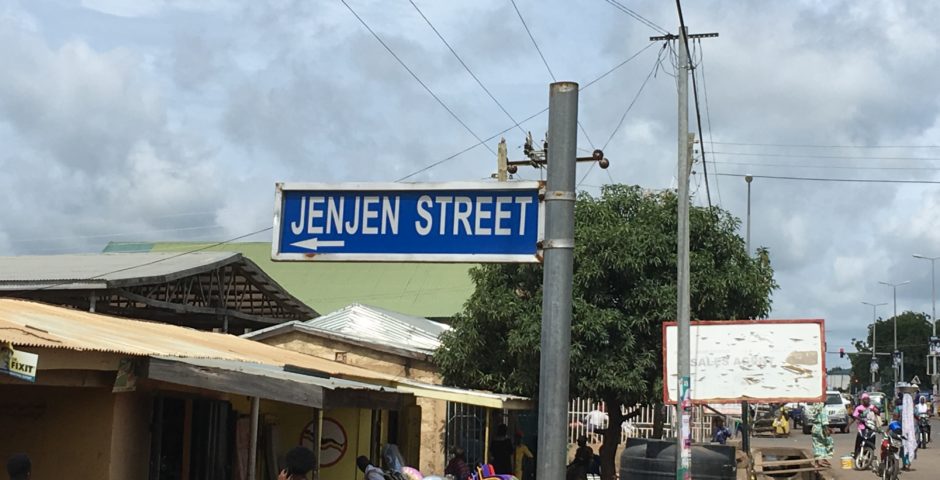Mourning the Nameless Adinkra Symbol
A blogging buddy of mine, whom I very much admire, redesigned her website a few months ago with stunning results. She is an essayist, and her posts are heavy on written content. Her redesign changed the way her readers interact with her words, employing color contrasts, a pleasing font and a bright white background that keeps the mind engaged. The human attention span has been shortened to an estimated 8 seconds due to our engagement with digital technology; however though her written posts are lengthy, requiring 5-7 minutes to complete, the reading experience is so pleasant that the time seems to fly by.
Part of that redesign included the creation of a custom logo as part of her branding. She wanted something that incorporated Sankofa, and worked with a graphic designer to create a striking logo around this Adinkra symbol.

When I saw it – and the explanation behind the design – I confess I had a visceral reaction. It’s not that I was/am unfamiliar with this symbol. It’s on gates and walls all over the country. The apoplectic response I was experiencing was due to nothing more than dissonance. These two ancient symbols cannot possibly exist with the same meaning at the same time. Or could they?
Many people, myself included, do not associate this Adinkra symbol with Sankofa. The word “Sankofa” (translated as ‘go back and get it’) generally brings to mind a bird looking back at its tail. It’s an admonishment to look back to the past for wisdom and applying it to the present in order to positively affect the future. (Or, at least that’s what they told me in my 6th grade African studies class.) So what is the literal meaning behind this other symbol? Would the men/women responsible for their creation say affirmatively that there is no differentiating between the two (in meaning, translation or inspiration), beside their physical attributes?

If you had asked me even just a few weeks ago, I’d defer to Google and would have most likely accepted the conventional idea that these are both versions of Sankofa. However, since I’ve been giving so much thought to syntax and the evolution of language, I have my doubts. I recently wrote about the diluting of our local languages, which has resulted in the extinction of some words and the proliferation of others. Anglophiles have influenced and altered much of our language. We’ve seen it not just with conversational language, but with naming as well.
A post I came across a few years ago was written by someone who described how his/her family got their surname. Their ancestor, a man by the name of Dua, went to England as part of a delegation from Ghana. When he was asked about his name, he replied in English that his name was “calling wood” in an attempt to translate the meaning of his name. Dua is the Twi word for “wood”. I’m willing to bet that Mr. Dua translated his response directly from Twi to English, and so instead of saying “It means wood”, he responded “It is calling (misappropriation of ‘called’) wood”. In either event, the English then took to referring to him as Mr. Callingwood and eventually, the family named morphed into a more modern version spelling: ‘Collinwood’. Another friend of mine shared how her Fante family ended up with a very English sounding name, but she’s threatened to kill me if I should ever disclose the evolutionary process of how her very posh English surname. I like life, so I won’t. Just know that every Ghanaian with a British surname does not necessarily derive from British ancestry.
So what about this alternate Adinkra symbol? I believe this symbol has suffered from a similar fate; i.e. it’s origin and appellation has been attenuated. The two symbols – the bird looking back and coiled lines facing inward – are stark in their differences. The budding anthropologist in me cannot reconcile that they mean the exact same thing, and I think it would be culturally slothful of us to insist that it is. Just about every response I’ve received on what this symbol means and its actual designation has been “a variation of sankofa”. But then that’s about as accurate as saying my son is a variation of my daughter because they are both products of my uterus. Stone is Stone, and Aya is Aya. Surely each symbol is in possession of its own distinct, unique name.
I think about words a lot, and I have to wonder what the originators of Adinkra had in mind when they created the bird and the touching coils if indeed they have similar meanings. What necessitated the redundancy? When you consider any word – let’s take “hot”, for instance – does it have the power to completely convey the intensity behind that heat? Does it paint a perfect picture in the mind’s eye? Hardly; which is why the words “smoldering”, “molten”, etc. were invented. What idea do the two “birds” facing inward convey to a deeper level that the crane with an arched neck – or vice versa – fails to? And more importantly, what is its actual designation? Surely its proper name isn’t Variation or Alternative of Sankofa.

My father’s last surviving ‘grandmother’ (she was actually a great aunt) just died at 105 years old. Perhaps she or one of her few remaining peers could give some insight into the depth of the matter…but you know how we treat our old folk. We venerate them in word only. There is something that a woman who’s lived to the age of 105 can teach us about health and lifestyle, but we’d rather ignore her and confine her to a seat in the family courtyard than invite her on TV or radio. Such a woman can hardly be considered relevant (or interesting) to audiences between the ages of 18-45, could she? As a result, Anglophiles, elites and cultural hijackers continue to set the agenda and another piece of our history is lost to memory and antiquity. And you know what? I’m pretty emotional about what we’re losing in this steady cultural erosion. How reliable is what we know?
Do you have any clues about the name and meaning behind this symbol? Do you think my doubts are justified? I’d love to hear what you think before the comments close in 24 hours!




